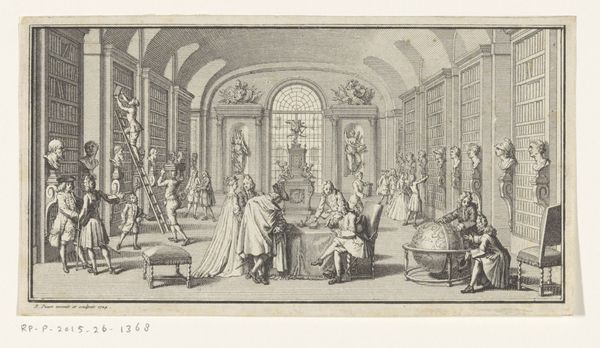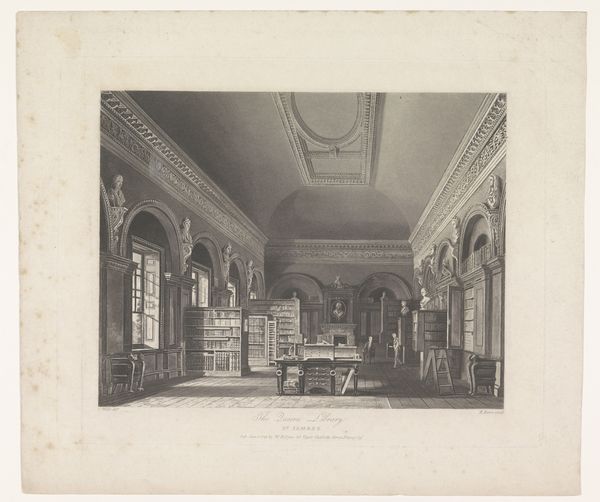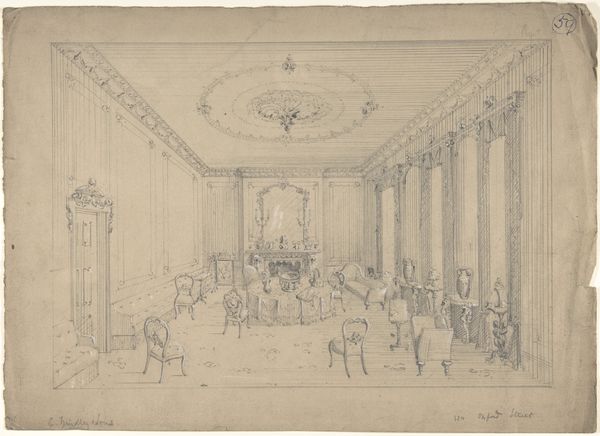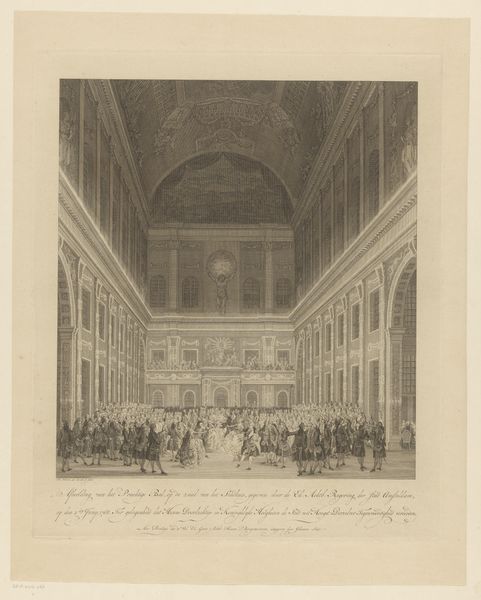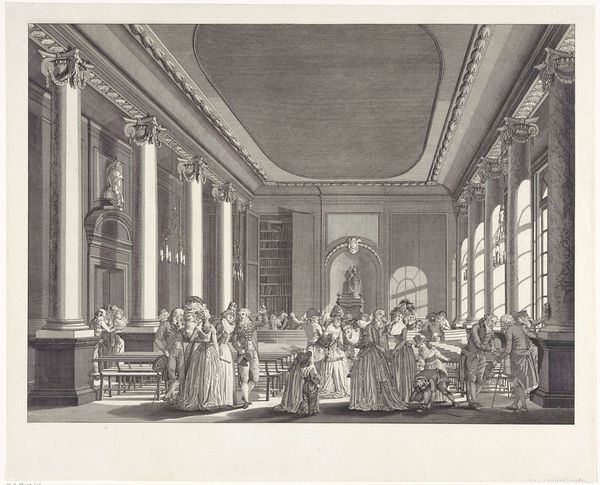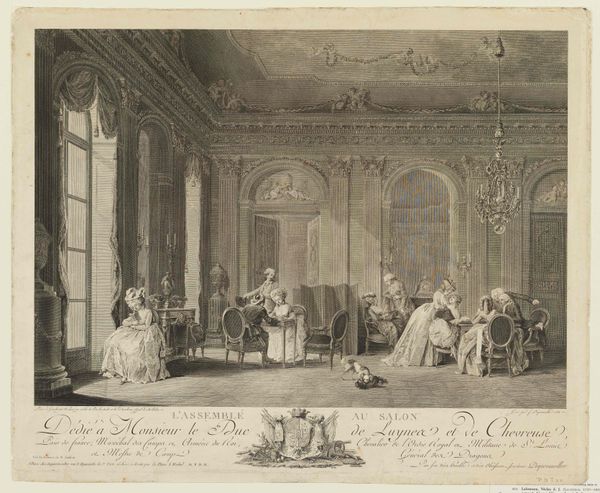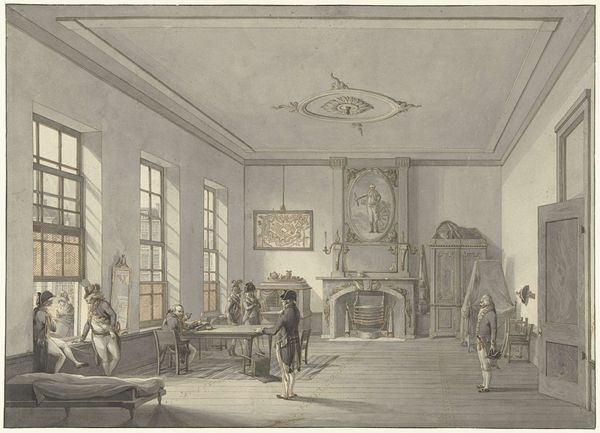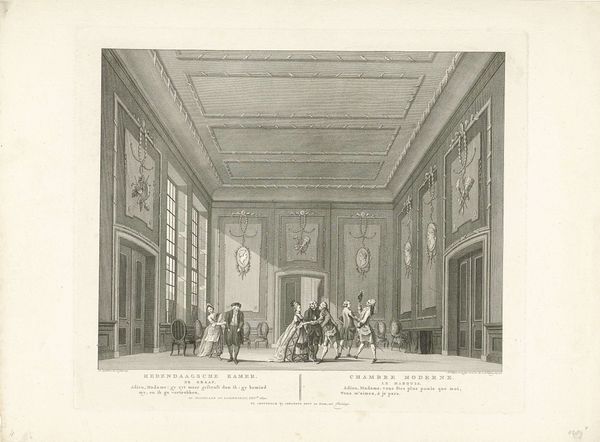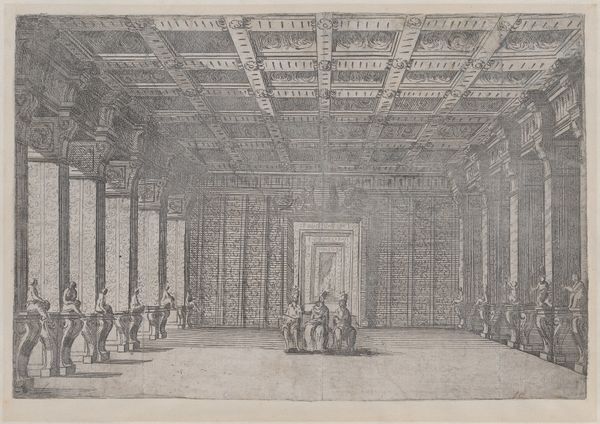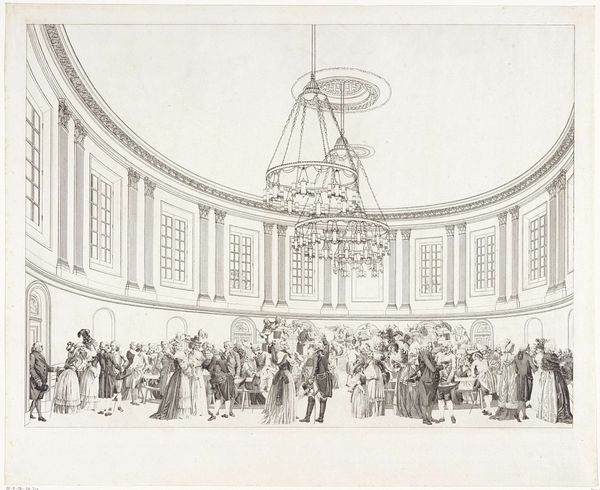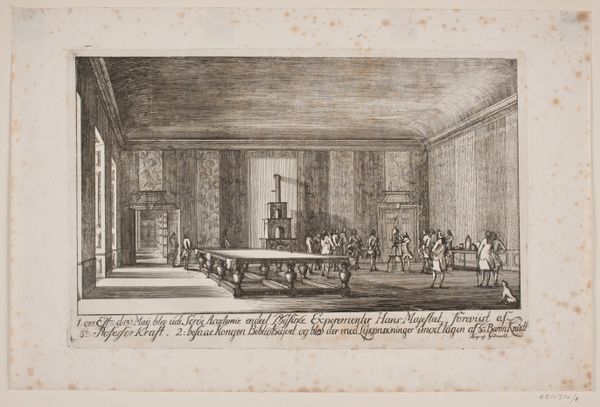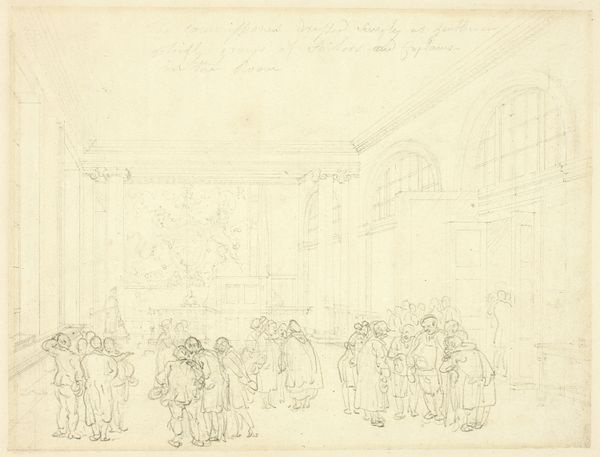
#
aged paper
#
toned paper
#
light pencil work
#
homemade paper
#
photo restoration
#
ink paper printed
#
parchment
#
pencil sketch
#
old engraving style
#
nude colour palette
Dimensions: height 297 mm, width 372 mm
Copyright: Rijks Museum: Open Domain
Editor: Here we have John Hill’s “Interior of the Pump Room at Bath,” made sometime between 1804 and 1811. It depicts what appears to be a gathering of affluent people, and what strikes me is how the architecture dwarfs them. What do you make of this piece? Curator: The architecture *is* dominant, isn't it? And that’s central. Pump Rooms, particularly in Bath, were about civic identity and social ritual. Note the classical columns, the symmetrical design—they all speak to the ideals of the Enlightenment. Do you recognize any symbols of health? Editor: Not immediately. The people almost seem incidental to the room itself, as if they’re just props to showcase the architecture. Curator: Precisely! They participate in the room’s ritual, a ritual of health, leisure, and social standing. The act of “taking the waters” was perceived as cleansing, not only physically, but socially too. Observe their gestures, their attire...it all forms part of the narrative the artist builds around this cultural practice. Editor: So, the grandeur of the architecture is almost like a stage setting for this social and physical purification ritual? It’s meant to inspire a sense of well-being, a symbol of that cleansing? Curator: Indeed! And it reflects a collective aspiration: to embody ideals of health, reason, and social harmony. That the "waters" are administered within a space adhering to a strict geometry underscores this striving towards rational order in life. This architectural staging elevates the act to a symbol of civic pride and health. It suggests an era when the symbolic and material well-being of its inhabitants was a prime goal. Editor: It is quite amazing how many layers of meaning an interior space could represent at the time. It’s definitely a work that resonates far beyond its simple depiction of a room. Curator: Absolutely. By contemplating these symbols, we better comprehend cultural ideals that influence even modern living.
Comments
No comments
Be the first to comment and join the conversation on the ultimate creative platform.
